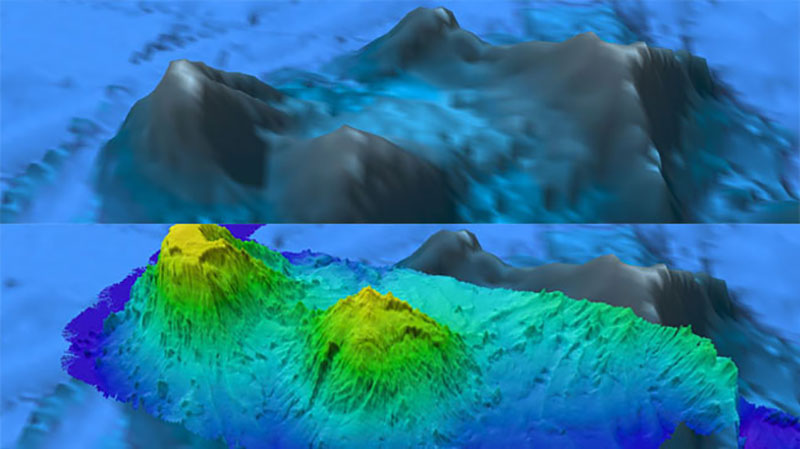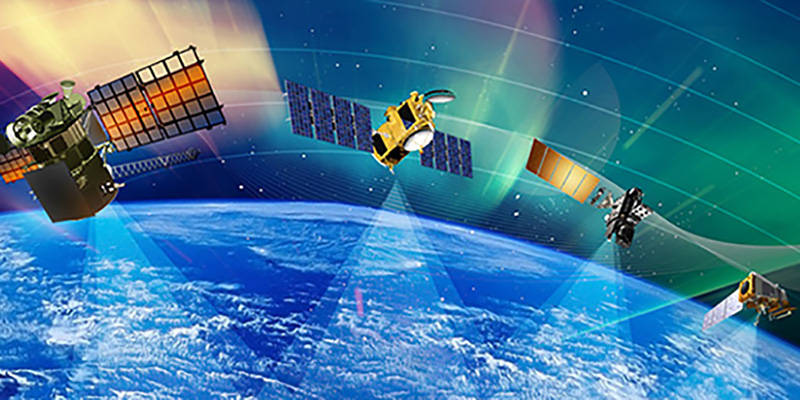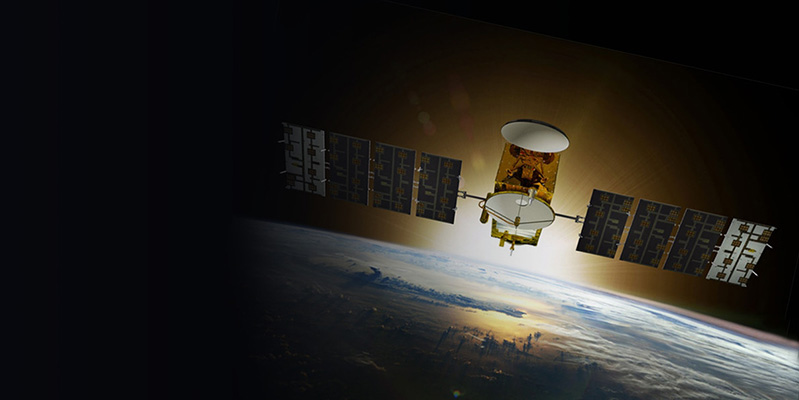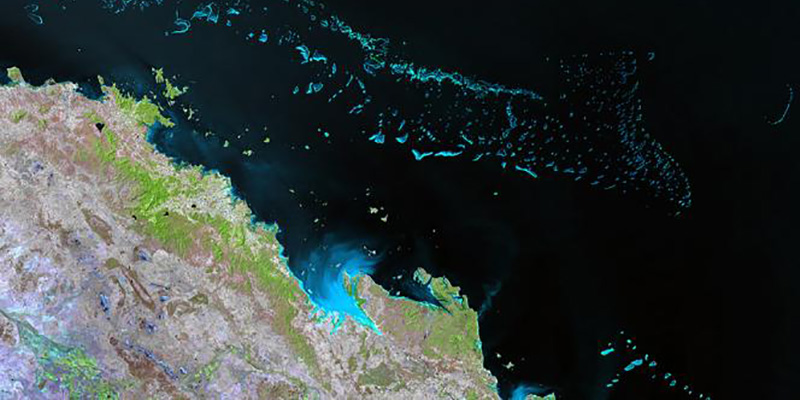Environmental Satellites

Illustration of NOAA’s GOES-17 satellite, which was launched on March 1, 2018, and is currently operational as GOES West, providing coverage of the western U.S., Alaska, Hawaii, and the Pacific Ocean. GOES-17 is one of two next-generation geostationary environmental satellites monitoring the Western Hemisphere: together, GOES-16 and GOES-17 observe Earth from the west coast of Africa all the way to New Zealand. Image courtesy of NOAA. Download larger version (jpg, 423 KB).
High above Earth’s surface, NOAA satellites are constantly gathering data to monitor and understand our dynamic planet. Satellites that detect and observe different characteristics and features of the Earth's atmosphere, land surface, and ocean are referred to as environmental satellites. Scientists can use satellites to study ocean bathymetry, sea surface temperature, ocean color, coral reefs, ice cover, and more.
How Do They Work?
Most environmental satellites have one of two types of orbits: geostationary or polar orbiting.

This graphic shows NOAA’s satellite constellation as well as satellites operated by other agencies around the world. Image courtesy of NOAA. Download larger version (jpg, 9.4 MB).
Geostationary satellites orbit the Earth at a speed matching the Earth's rotation, which allows them to continuously watch over one specific region on the surface. NOAA’s Geostationary Operational Environmental Satellites (GOES) orbit the Earth about 22,240 miles directly over the Equator, providing consistent and reliable monitoring of an entire hemisphere at all times. GOES data are used primarily for weather forecasting as well as tracking emergency locator beacons carried by ships, planes, and even hikers.
Polar orbiting satellites pass over a point on the Earth at the same time each day. Sun-synchronous environmental satellites are “polar orbiting,” meaning that they orbit the Earth from north to south, passing over the North and South Poles during each orbit. These satellites orbit closer to Earth than their geostationary counterparts, meaning they can collect information at greater detail. NOAA operates several of these satellites, including Polar Operational Environmental Satellites (POES) and the Jason series, which is operated in partnership with NASA, France’s Centre National d’Etudes Spatiales, and the European Organisation for the Exploitation of Meteorological Satellites. These satellites collect valuable information to support both short-term weather forecasting and long-term climate and environmental data records.
How Are Environmental Satellite Data Used to Study the Ocean?
While meteorologists have used environmental satellites as platforms to monitor the state of the atmosphere for years, the use of satellite data to monitor the ocean is more recent. As scientists have developed ways to make inferences from satellite data about the state of the ocean at depth, they can now use satellites to make a wide range of observations. These can include tracking ocean waves, analyzing currents and eddies, monitoring changes in sea level or global ocean carbon, or determining biological (phytoplankton) production. Satellites can tell us about sea surface temperatures, the health of coral reefs, the migration patterns of whales, how sea ice is changing, and more.

A satellite composite image of global sea surface temperatures from NOAA's next generation of Geostationary Operational Environmental Satellites (GOES-R) and the NOAA/NASA Joint Polar Satellite System (JPSS). Image courtesy of NOAA. Download image (jpg, 917 KB).
Scientists can even use environmental satellites to map the seafloor. Due to gravity, the surface of the ocean bulges outward and inward, mimicking the topography of the ocean floor. The bumps, too small to be seen, can be measured by a radar altimeter aboard a satellite. Altimeter data collected using satellites has been used to generate maps of 100 percent of the ocean bottom, at a resolution of 1.5 kilometers, or about one mile. While maps at this resolution do give us a general picture of what is on the entire seafloor, they offer limited detail and can omit smaller things such as volcanic craters or shipwrecks.

Two seamounts in the New England Seamount chain. The top image was generated from satellite altimetry data while the bottom image was created from multibeam data collected on NOAA Ship Okeanos Explorer. Using the multibeam data, the seamount on the left side of the image was discovered to be a guyot, which is a flat-topped extinct volcano. Also revealed on the seamounts were hundreds of small peaks not visible in scientifically valuable, but low-resolution, satellite altimetry. Satellite altimetry gives a first pass look at large features present on the seafloor, but generally does not reveal features smaller than 1.5 kilometer in length or width. Image created using QPS Fledermaus. Satellite altimetry data from Smith, W. H. F., and D. T. Sandwell, Global seafloor topography from satellite altimetry and ship depth soundings, Science, v. 277, p. 1957-1962, 26 Sept., 1997. Download image (jpg, 50 KB).
The ocean is vast, covering more than 70 percent of our planet. With their elevated view, environmental satellites are powerful tools for observing large areas of our planet, providing us with a greater volume of information than would be possible to obtain solely from Earth’s surface. Combining satellite data with more detailed observations is integral to increasing our understanding of this dynamic planet we call home.



